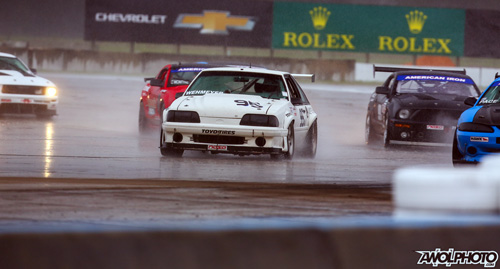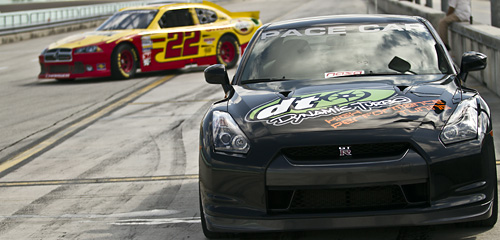Track Time

NASA Florida Region offers as much track time as possible for your dollar spent, not to mention your weekend spent away from home. Our HPDE groups typically get at least 100-110 minutes on track per day (four 25-30min sessions each for HPDE1/2-3-4, or two 25-30min warmups then three 20-25min timed sessions for TT) and our race groups typically get at least 90 minutes on track per day (20min practice, 20min qualifying, and one 30min races on Saturday then a 20min qualifying and two 25-40min races on Sunday) not counting any scheduled enduros or bonus races. Best of all you can enter two groups for a significant discount, as a “Double Down” or “Supersize” entry, and get twice as much track time if that’s what you are after!
We have seen some interesting marketing about “dollars per minute of track time” in HPDE recently, so let’s look at how NASA FL compares – please click here for a detailed breakdown. We also put much time and energy into making sure the track time we offer is high quality and that you get everything you paid for whenever possible, so our “dollars per minute of seat time” ratio is among the best in the business as a result. However it is an unfortunate reality of our sport that a car may occasionally end up off the racing surface while a session is in progress. When this happens the industry norm is to stop the session, recall all cars to the paddock and dispatch the appropriate emergency vehicle team to recover the errant car. This procedure often results in the loss of a session for the group that was on track and its corresponding track time. It is common enough that you need to consider the “scheduled” track time vs. the “actual” track time that an organization provides to know how much of it you will actually spend driving fast. While many other organizations find it acceptable to see the actual track time only be 50%-75% of what was scheduled, we at NASA hate the loss of track time and have created a system designed to keep actual track time consistently within a much higher percentage. Here is how we do it…

Hot Pulls– Not only is our highly trained and very experienced team built for full-tilt-boogie racing situations but we carry double the staff compared to nearly every other organization. Even better, our rescue professionals conduct “hot pulls” when they can be done safely. A “hot pull” occurs when an errant car is recovered without having to recall the entire group into the paddock. NASA Race Control creates a “yellow zone” surrounding the incident in which drivers may not pass and must reduce speeds dramatically. Once out of the “yellow zone”, however the drivers enjoy a “green” track until they return again to the “yellow zone” on subsequent lap. Then once the errant car has been removed, the “yellow zone” returns to “green” and drivers enjoy the entirety of track under “green” conditions. While drivers have to sacrifice some speed in these occasional temporary “yellow zones” for safety reasons, it is our belief that drivers prefer this scenario to sacrificing the entire session – so we do hot pulls as often as possible.
Two Ambulances– To save money, most organizations will reserve only ONE staffed ambulance for their track events. NASA usually reserves TWO ambulances for all event weekends. Why? It is a rule of all tracks that, in the event that a participant needs to be transported to a medical facility, all on-track activities must cease until the ambulance returns to the track, UNLESS there is a second ambulance present. It is rare that serious injury occurs at these types of events; however, precautionary transports are not at all uncommon and when they do happen, non-NASA organizations must shut the track down for up to several hours, losing much “hot” track time. But NASA reserves a second ambulance which affords our participants an even greater level of emergency care and allows the event schedule to continue without delay should a transport be necessary.
Roll On, Roll Off– When you look at a NASA daily session schedule, you may notice that there are no time buffers between sessions. We hate wasting track time so we created a system that allows two groups to be on the track at the same time. As the last car of a group finishes its session, NASA Race Control releases a pace car, leading the next group out onto the track. The departing group cools down as the incoming group warms up. This maximizes track time in a highly safe and efficient manner.

When you are choosing which events to attend this season, please consider all that NASA does to ensure that you have a very fun weekend and get all the track time you paid for, as safely and efficiently as possible!
